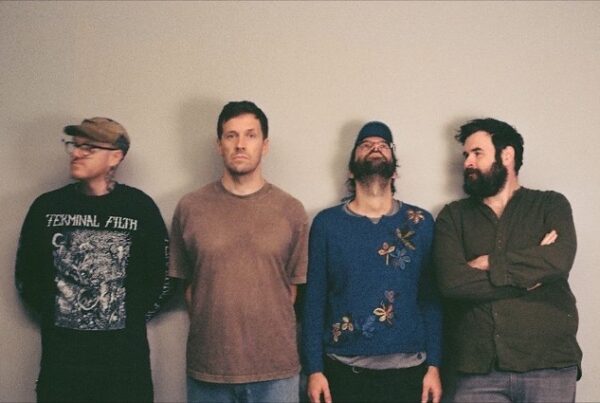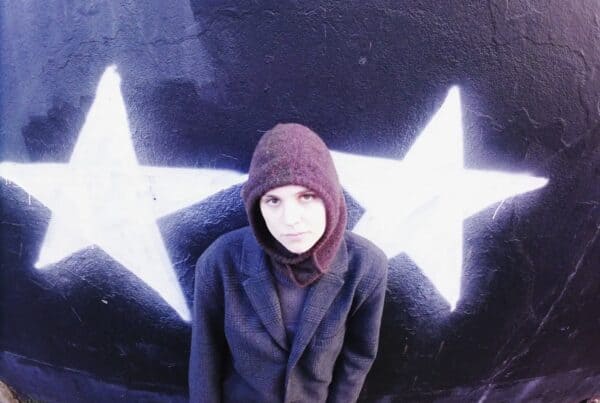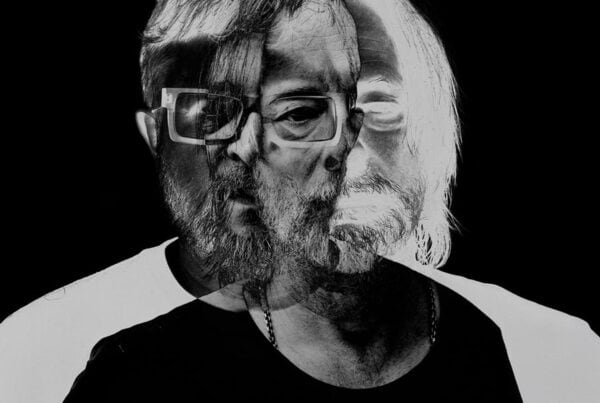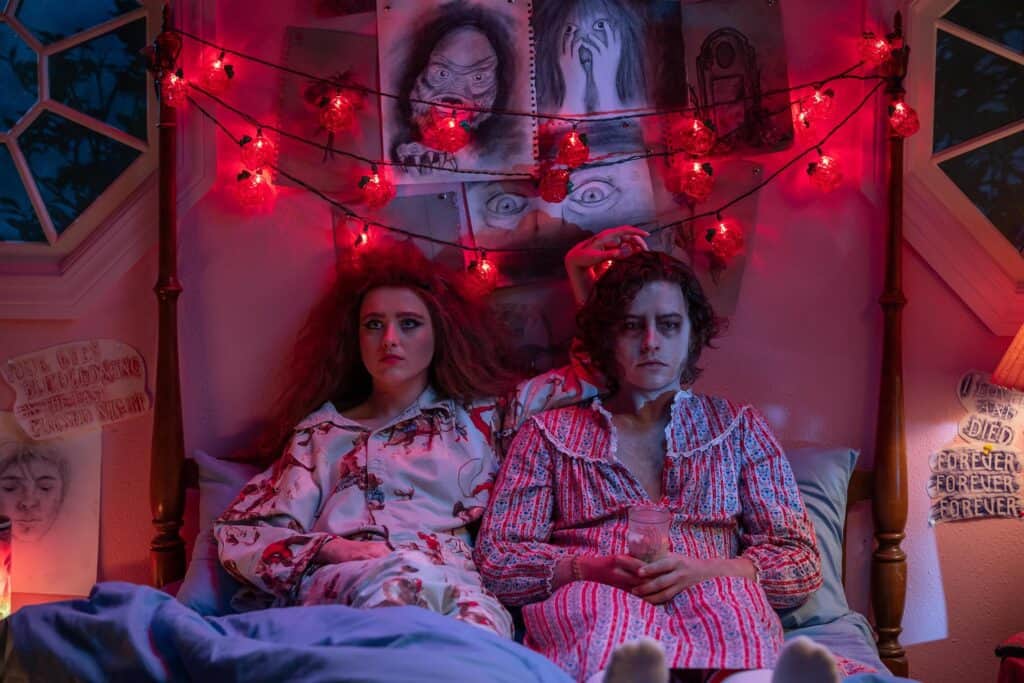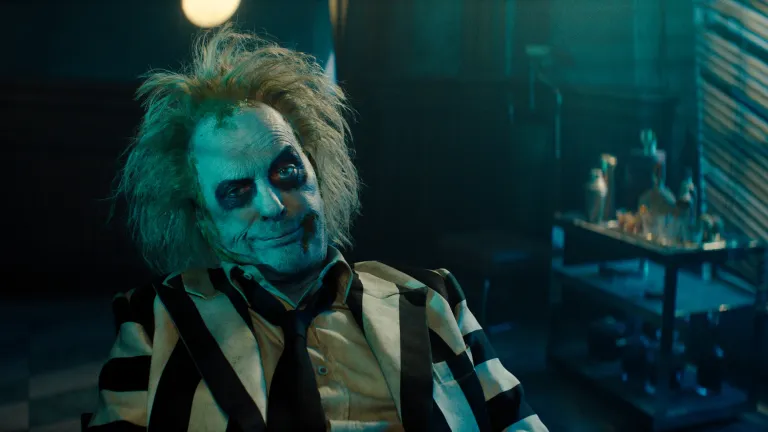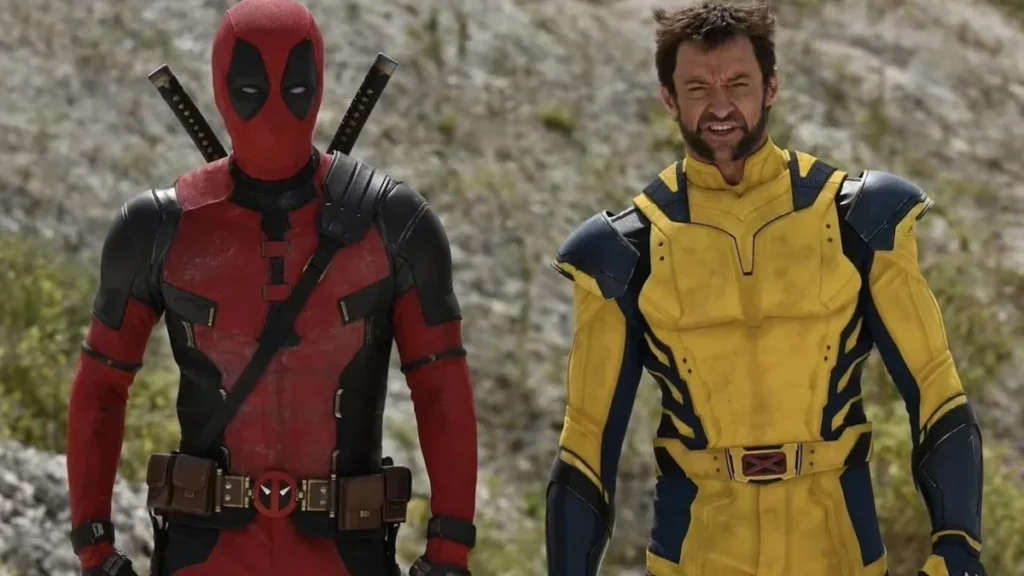After the huge success of Ti West’s throwback slasher X and its prequel Pearl in 2022, the breakout director has seemingly tapped into Hollywood’s next great horror franchise. And now, he’s taking the saga even deeper with the upcoming neo-noir thriller MaXXXine. Set six years after the harrowing finale of X, West’s new feature follows the titular protagonist as she journeys through the glitz, glamour, and grime of 1980s Hollywood and accidentally stumbles into the deadly case of a killer on the loose. Judging by the neon-soaked visuals of the movie’s trailer and the nostalgic designs of the posters, the third instalment in West’s trilogy is shaping up to be a real celebration of ‘80s culture and aesthetics, much like X looked back on the flashy ‘70s and Pearl on progressive-era America. By transporting audiences back to this nostalgic era, MaXXXine dives headfirst into a long-running Hollywood trend that’s just as easy to love as it is difficult to pin down: why are modern horror movies so infatuated with the ‘80s?

While not strictly ‘horror’ and definitely not a movie, the most obvious candidate for kicking off this trend in recent years is Netflix’s beloved sci-fi series Stranger Things, which centres around a group of school friends who stumble into a governmental conspiracy that threatens, quite literally, to turn their world upside down. Though not a movie, Stranger Things is incredibly cinematic in its own right with an elevated budget, lengthened episode runtimes, and A-list cast members that made it such a huge sensation in the first place. As such, the project is often lumped together with other pieces of ‘80s horror, primarily because it was among the first examples of this trend really taking off in the mainstream. The way that Stranger Things managed to blend the blood-soaked dread of retro slashers like A Nightmare on Elm Street with the more family-oriented fun of comedies like The Lost Boys or Stand By Me was an immediate nostalgia-trip for many audiences, combining the best of both worlds when it comes to the two sides of the ‘80s horror coin. This effectively kicked off the trend that we’re still seeing today in movies like Fear Street, Totally Killer, and even Stephen King’s It.
But why the 1980s specifically? There’s plenty of ‘90s nostalgia going around in music, we’re seeing early ‘00s fashion trends on the rise, so why is it the ‘80s that have stuck around in horror cinema? The easiest answer is that for many horror fans, the 1980s are seen as the golden age of the horror genre (at least critically and commercially). Plenty of the most popular horror movies ever made, such as The Shining or Friday the 13th, were released in that decade, and as such, it’s from this period that much of the nostalgia comes to emerge. Using this period as a backdrop for modern storytelling is a clean way of paying homage to the ‘80s flicks that built the foundations of the genre, and transporting audiences back to this era at the same time. Particularly in today’s cinematic climate, where the horror genre is mostly filled with sequels, remakes and reboots, using such a familiar setting and aesthetic style can be an effective way of getting audiences interested in original stories that they potentially wouldn’t care about otherwise.

However, there’s actually another more surface-level reason that horror movies and the 1980s blend together so well, and that’s simply the visuals of it all. The ‘80s were defined by neon lights, catchy music, and bold colours that might not initially seem like a suitable place to house ghosts, monsters, and violence, but it’s the juxtaposition between the visuals and the content of these ‘80s slashers that’s so engaging. The newfound liberties and freedom of identity that characterised the ‘80s are totally different from the horrors that often lurk underneath the glitzy facade of the movies, perhaps contributing to the decades’ status as a horror goldmine. It gives the filmmakers a perfect opportunity to blend the darkness of the genre with the overt colorfulness and new wave music of the era, adding an extra layer of style and flair that you simply don’t find in modern-day horror. This is exactly what makes Stranger Things’ demogorgons and MaXXXine’s elusive serial killer so frightening: they’re symbols of darkness in an era of nostalgia and happiness.
Despite the current resurgence of the 1980s in horror, the concept of using a temporal distance between the audience and the narrative to evoke fear is nothing new. The idea of setting horror movies outside of the modern day is actually a trend that exists in some of cinema’s most frightening offerings, whether that’s the middle ages in folk horror, the Victorian era in supernatural horror, or the late 21st century in modern slashers. Keeping the audience at bay from the time period of a story can be an extremely effective way of instilling them with dread and uncertainty, as they’re immediately placed into an unfamiliar state of mind.
Ultimately, the horror genre’s fascination with the 1980s is very much a ‘right place, right time’ scenario, Today’s society is just distanced enough from the decade to feel nostalgia and distance from it, but close enough to remember what it was really like and understand the darkness and repression that was hidden beneath this period of overt self expression. It’s this dichotomy that makes for such a perfect setting for movies like MaXXXine, whose aesthetics and visuals are almost bright and loud enough to distract from the horrors of truth until the perfect moment.

